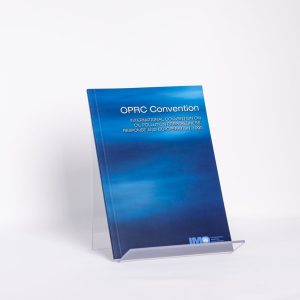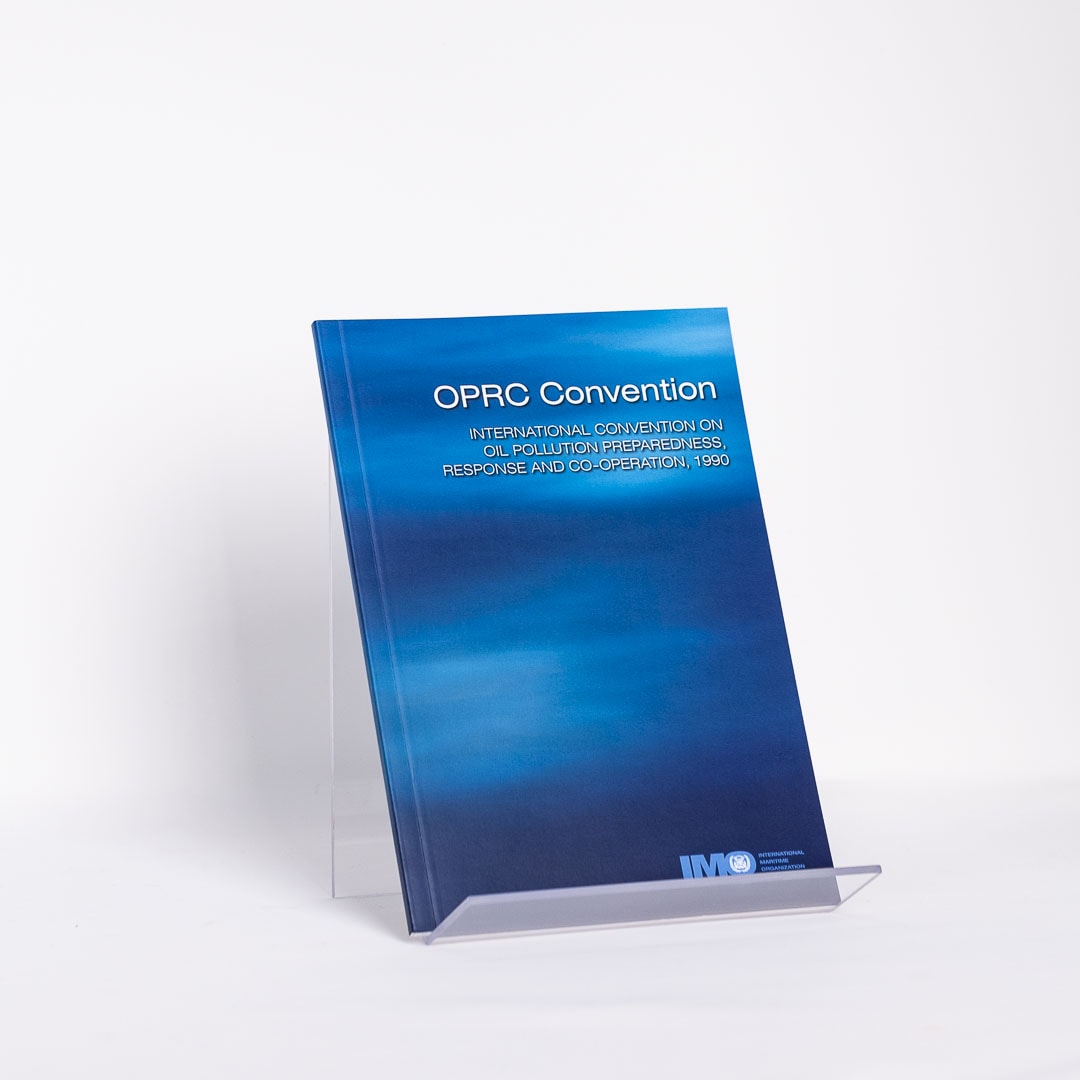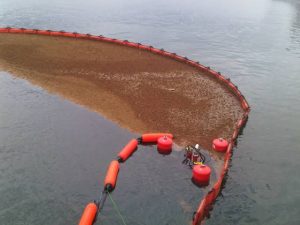
Empowering Nations to Act Swiftly and Cooperatively Against Oil Pollution at Sea
When Every Drop Counts
When an oil spill occurs at sea, time is not just money—it’s marine life, coastal health, and livelihoods. One of the most infamous examples was the Deepwater Horizon disaster in 2010, which released over 4 million barrels of oil into the Gulf of Mexico. The environmental and economic damage was immense. Yet, it also showcased how vital international cooperation, preparedness, and response frameworks are in handling such disasters.
To address these emergencies with global coordination and clarity, the International Convention on Oil Pollution Preparedness, Response and Co-operation (OPRC) was adopted. This article breaks down the OPRC Convention for readers at all levels—from curious readers and maritime students to professionals and policy experts—offering a deep dive into its structure, purpose, implementation, real-world impact, and future evolution.
What Is the OPRC Convention?
The OPRC Convention, adopted in 1990, is a legally binding international agreement that requires governments and shipping industries to be prepared for, and capable of responding to, oil pollution incidents.
Key Facts
-
Full Name: International Convention on Oil Pollution Preparedness, Response and Co-operation (OPRC)
-
Adopted: November 30, 1990, in London
-
Entered into Force: May 13, 1995
-
Administered by: International Maritime Organization (IMO)
-
Parties: 114 countries (covering 96% of the world’s shipping tonnage)
The Convention emphasizes preparedness, response capability, mutual assistance, and the establishment of national systems and contingency plans.
Historical Background: Why Was the OPRC Created?
Prior to the OPRC, oil spills were addressed mostly at the national level, with limited coordination. High-profile disasters demonstrated that delays in response and lack of preparation amplified damage.
Driving Incidents Behind Its Adoption
-
Torrey Canyon (1967): A supertanker spilled over 100,000 tonnes of crude oil off the UK coast. Lack of international protocols caused confusion and delayed response.
-
Amoco Cadiz (1978): A grounding off France’s coast released over 220,000 tonnes of oil.
-
Exxon Valdez (1989): The spill in Alaska shocked the world and catalyzed the push for the OPRC Convention.
These events made it clear: oil pollution is a transboundary threat, and global preparedness is essential.
Core Objectives and Principles of the OPRC Convention
The OPRC aims to equip all parties with the tools, systems, and collaboration mechanisms needed to respond efficiently to oil pollution incidents.
Main Objectives
-
Develop national oil spill response systems
-
Require ships and offshore units to carry oil pollution emergency plans
-
Establish contingency plans and regular training exercises
-
Facilitate international cooperation, technology exchange, and assistance
How the OPRC Convention Works
Each signatory country must take several steps to comply with the Convention. These include institutional, operational, and legal responsibilities.
National Requirements
-
Designated Competent Authority: Each country must appoint an agency or department to handle oil spill preparedness and response.
-
National Contingency Plans: Governments must maintain comprehensive, tested plans for dealing with marine oil pollution.
-
Pollution Reporting Procedures: Timely notification mechanisms must be in place to alert other countries and the IMO.
-
Oil Pollution Emergency Plans (SOPEP):
-
Required for ships over 400 gross tonnage
-
Must include clear procedures for crew action, contacts, and containment measures
-
International Cooperation
-
Mutual assistance agreements for sharing expertise and equipment
-
Information sharing on best practices, pollution incidents, and technologies
-
Support from the IMO’s Integrated Technical Cooperation Programme (ITCP) for developing countries
Real-World Applications and Case Studies
Deepwater Horizon (2010, USA)
While not directly managed under the OPRC, this incident showed the relevance of its principles. The US government’s response, with international expert and equipment support, mirrored the Convention’s structure for cooperation and preparedness.
Prestige Tanker Spill (2002, Spain)
After the Prestige sank off the Spanish coast, oil spread across 2,000 kilometers. The disaster prompted the EU and affected states to review OPRC-aligned contingency plans and develop new monitoring frameworks.
Regional Examples
-
Mediterranean and REMPEC: The Regional Marine Pollution Emergency Response Centre (REMPEC) helps Mediterranean countries align with OPRC and coordinate drills and capacity-building.
-
West and Central Africa: WACAF Project (IMO and IPIECA) supports 22 coastal states to develop and implement national OPRC frameworks.
OPRC and Its Protocols
In 2000, a Protocol to the OPRC was adopted to include hazardous and noxious substances (HNS)—chemicals other than oil.
OPRC-HNS Protocol (2000)
-
Broadens scope beyond oil to include toxic, explosive, or reactive chemicals
-
Requires similar planning, reporting, and response mechanisms
-
Increasingly relevant due to growing chemical transport by sea
Benefits for Different Audiences
For Beginners and General Readers
The OPRC ensures countries are ready to act quickly if an oil spill happens, protecting marine life, beaches, and fisheries. It encourages cooperation, so no country is left alone during a crisis.
For Students and Researchers
OPRC is a key instrument in international environmental law, disaster preparedness, and maritime governance. It’s ideal for studies on legal frameworks, emergency logistics, and risk management.
For Professionals and Industry Experts
Shipping operators, port authorities, and offshore companies benefit from:
-
SOPEP templates and compliance guidelines
-
Access to mutual aid agreements and spill response assets
-
Training resources and certifications (e.g., IMO Model Courses)
Key Challenges and Criticisms
Despite its strengths, the OPRC faces operational and structural hurdles.
Notable Challenges
-
Funding and training gaps in developing countries
-
Limited enforcement of national contingency plans
-
Overlapping responsibilities in multi-agency coordination
-
Insufficient drills or outdated equipment in some regions
Addressing these issues requires capacity building, transparent audits, and continuous improvement mechanisms.
Emerging Trends and Future Developments
As technology and maritime risks evolve, so too must the OPRC Convention.
Digital and AI Integration
-
Drones and satellite imaging for spill detection
-
AI-powered predictive tools for oil spill modeling
-
Real-time data sharing platforms for regional coordination
Climate-Linked Risks
With increased Arctic shipping, the OPRC is being applied to new routes where ice, cold, and remoteness complicate responses.
Integration with Broader Environmental Goals
The OPRC aligns with SDG 14: Life Below Water and is being linked to regional sea conventions (e.g., HELCOM, OSPAR) for holistic marine ecosystem protection.
FAQs – People Also Ask
What is the main purpose of the OPRC Convention?
To ensure all countries have systems, plans, and cooperation mechanisms in place to respond swiftly to marine oil pollution incidents.
What does SOPEP stand for?
SOPEP stands for Shipboard Oil Pollution Emergency Plan, required under the OPRC for ships over 400 GT.
Is the OPRC mandatory?
Yes, for all member states. It is a binding international treaty administered by the IMO.
How is OPRC different from MARPOL?
OPRC deals with preparedness and response, while MARPOL governs prevention and control of ship-based pollution during operations.
Conclusion: Preparedness Is Protection
The OPRC Convention is more than an international agreement—it is a global safety net, enabling countries to protect oceans, coastlines, and communities through structured readiness and cross-border solidarity.
As oil remains a vital yet risky part of global trade, the need for stronger response systems, smarter technologies, and deeper cooperation will only grow. Whether you’re a policymaker, mariner, researcher, or coastal resident, the OPRC offers a framework that directly benefits you—and the planet.
📢 Call to Action:
Stay informed, support marine protection policies, and encourage your country or organization to align fully with the OPRC and its HNS Protocol.
References / Further Reading
-
IMO. (1990). International Convention on Oil Pollution Preparedness, Response and Co-operation (OPRC)
-
IMO. (2000). Protocol on Preparedness, Response and Co-operation to Pollution Incidents by Hazardous and Noxious Substances (OPRC-HNS)
-
REMPEC: www.rempec.org
-
ITOPF: The International Tanker Owners Pollution Federation – www.itopf.org
-
United Nations Sustainable Development Goal 14: https://sdgs.un.org/goals/goal14



Hey, I think your blog might be having browser compatibility issues. When I look at your blog site in Safari, it looks fine but when opening in Internet Explorer, it has some overlapping. I just wanted to give you a quick heads up! Other then that, very good blog!
Hi! This post could not be written any better! Reading through this post reminds me of my good old room mate! He always kept talking about this. I will forward this post to him. Pretty sure he will have a good read. Thanks for sharing!